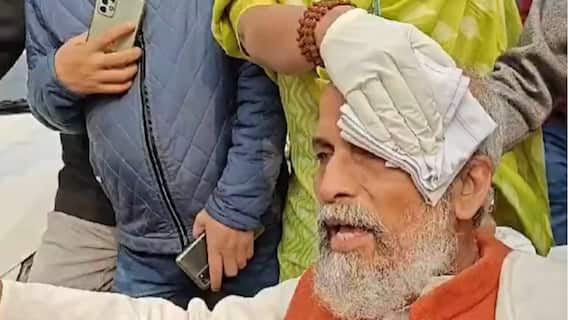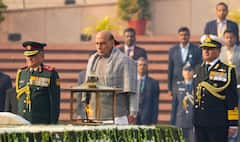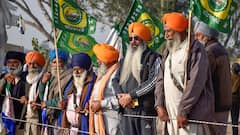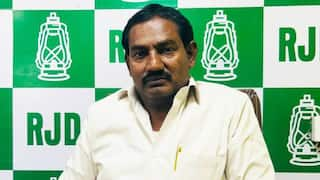Explorer
Advertisement
Kumbh Mela: Know all about the historical significance of India's biggest religious gathering
If one were to go down history lane , it is difficult to ascertain the exact date as to when did the Kumbh mela begin. Going by Indian mythology, it is believed that during Krutayug, the churning of the ocean of milk marked the commencement of the Kumbha Mela.

2019 Kumbh Mela
The Kumbha Mela, touted as the the world's biggest religious festival, began in the holy and historical city of Allahabad on Tuesday. The 2019 Kumbh Mela began on Tuesday morning at Prayagraj with the holy Shahi Snan by the Sadhus belonging to the Shahi Clan.
If one were to go down history lane , it is difficult to ascertain the exact date as to when did the Kumbh mela began. Going by Indian mythology, it is believed that during Krutayug, the churning of the ocean of milk marked the commencement of the Kumbha Mela.
The Gods and demons descended upon earth to acquire the pot of Amrut (Divine nectar) and decided to churn the ocean of milk. Vasuki, the king of serpents, was requested to serve as a rope around the mountain Meru to churn the ocean. Accordingly Vasuki became the rope and was tied around the mountain Meru. The ocean was churned with the Gods holding the tail of the serpent and the demons, the mouth.
During the churning, fourteen unique items came out of from the ocean – Poison, Kāmadhēnu (A wish-fulfilling cow), Uchhaih-ashrava (A white horse), Airavat (An elephant with four tusks), Koustubha mani (A diamond), Parijat Kalpavruksha (A wish-fulfilling tree), Devanganas (Celestial maidens) such as Rambha etc., Shri Lakshmidevi (Consort of Shrivishṇu), Sura (Alcohol), Som (Moon), Haridhanu (A Divine bow), a conch, Dhanwantari and Amrutkalash or Amrutkumbh (Pot of Amrut).
When Deity Dhanwantari emerged from the ocean holding the Amrutkumbh, the Gods contemplated that if the demons became immortal upon drinking Amrut, they would lead to the destruction of the world. They hinted the same to Indra’s son, Jayant, who instantly took the Amrutkumbh from Deity Dhanwantari and ran in the direction of Heaven. To get hold of the Amrutkumbh, Gods and demons fought each other for 12 days and 12 nights, which are 12 years in the human life cycle.
During the battle, the Amrutkumbh was kept down 12 times. Deity Sun protected it and the moon took care that the Amrut does not evaporate. The planet Jupiter (Guru) fought the demons and protected the pot. The 12 places where the drops of Amrit fell from the pot are considered to be the venues of the Kumbh Mela as per the special position of the above mentioned planets.
Of these 12 places 8 are in other lokas (Regions) and 4 on earth – Prayag (Allahabad), Hardwar (Haridwar), Ujjain and Tryambakeshwar-Nashik. At these places, the Kumbh Mela is held when the position of the planets and the tithi on which the Amrut drops fell on earth is the same. The Amrutkalash is also remembered during the Kumbh Mela.
Follow Breaking News on ABP Live for more latest stories and trending topics. Watch breaking news and top headlines online on ABP News LIVE TV
View More
Advertisement
Trending News
Advertisement
Advertisement
Top Headlines
Cities
Cities
India
India
Advertisement






































